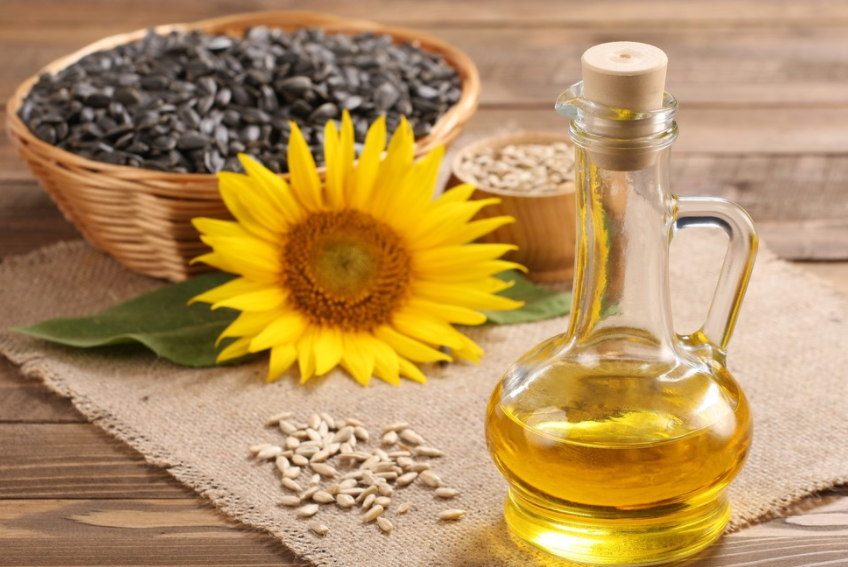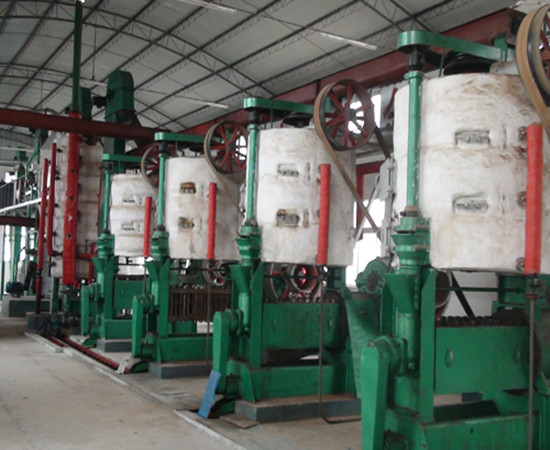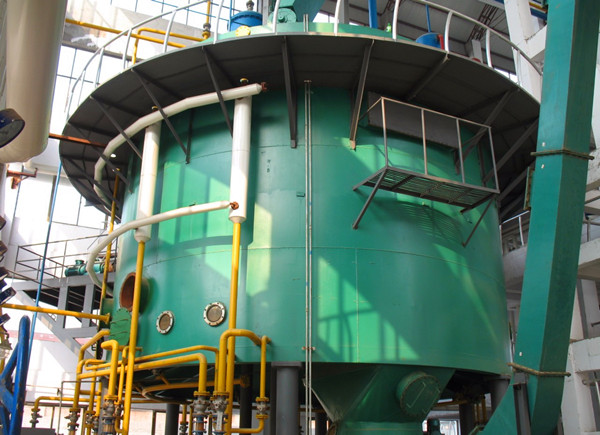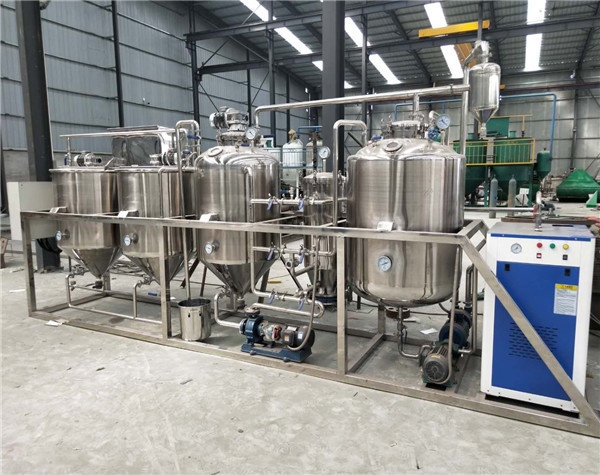The production process of sunflower oil is generally divided into pressing method and leaching method (refining method). The sunflower oil squeezing process can almost retain almost all the nutrients in the sunflower oil, but the sunflower oil squeezing method has a low oil yield and relatively high cost; the sunflower oil extraction refining method has a relatively high oil yield and high economic benefits. It is a popular processing method in the modern oil industry, but the sunflower oil leaching refining method destroys part of the nutrients, and there are traces of organic solvent residues (in line with national standards).

1. Squeezing method:
The squeezing method is also called "physical squeezing method", which uses external force to squeeze out the oil in the oil. It is not suitable for other chemical solvents, etc., so as to avoid the residue of organic solvents in the oil. The pressing production process largely retains the reasonable ingredients in sunflower seeds-polyunsaturated fatty acids, protein, dietary fiber, vitamins, trace elements and other nutrients that are beneficial to the human body, and are more suitable for special supplements for the human body health care.
2. Sunflower oil extraction process:
Screening → cleaning impurities → shelling → crushing → steaming and frying → pressing → squeezing crude oil → coarse filtration → fine filtration → low-temperature crystallization and crystallization → low-temperature filtration → sunflower oil
(1) Material selection: screening sunflower seeds, the oil content of which is 30%-50%;
(2) Impurity removal: use cleaning sieve and demagnetizer to remove iron, stone, grass, soil and other impurities in sunflower seeds;
(3) Roasting: add sunflower seeds to the tumbler wok to heat them evenly, and roast them. The conditions for roasting are as follows: temperature 160℃, time 50min, rotating tumbler wok speed 20-25 rpm/ Minute;
(4) Cooling: Use a fan to cool the roasted sunflower seeds, and reduce the temperature of the sunflower seeds to 45°C within 15-20 minutes, then place them in a cool place and spread them into a layer of sunflower seeds with a thickness of no more than 5 cm. At the same time, prevent the pollution of dust and sundries, and obtain raw materials after natural cooling to room temperature;
(5) Crushing: After weighing the raw materials and pulverizing them with a steel mill, they are packed in a clean container to obtain a paste-like sludge;
(6) Mixing: Add the paste-like sludge to the mixer, and add water to stir evenly, wherein the amount of water is 8%-10% of the quality of the raw materials in step (5);
(7) Pressing: The mixed materials are wrapped in a mold with clean filter cloth. The diameter of the mold is 60cm and the thickness is 10cm. After that, it is pressed in a hydraulic oil press. The pressing condition is that the pressure is ≤ 80MPa, the rate of pressure rise is 20MPa/hour, so as to obtain crude oil;
(8) Filtration: filter the crude oil through a plate filter to remove impurities in the crude oil.

3. Advantages and disadvantages of sunflower oil pressing method:
(1) Advantages: Almost all the nutrients in sunflower oil are retained, the taste is refreshing and not greasy, and the content of polyunsaturated fatty acids is rich.
(2) Disadvantages: The oil output rate is low and the cost is relatively high.
4. Sunflower oil extraction method (refining method):
The oil produced by the sunflower oil extraction process is also called leaching oil, which is to extract the oil with organic solvents (such as gasoline, ethanol, etc.). Extraction is a process of making sunflower oil from which the fat is extracted. The "oil" extracted from the initial leaching is a mixture of organic solvents and fats, etc. It cannot be eaten. It needs to go through a series of refining processes (dewaxing, degumming, dehydration, deodorization, deacidification, decolorization and other chemical treatments) before it can be eaten. The oil is generally lighter in color, and the natural gas in the material seeds is light or has no obvious smell. The sunflower oil leaching process can extract almost all the oil in the oil, and has relatively high economic benefits. It is a popular processing method in the modern oil industry.

(1) Grease leaching: The raw material or pre-pressed cake formed by the pretreatment of the oil is sent to the extractor by the conveying equipment, and the concentrated mixed dregs and wet dregs are obtained after solvent leaching.
(2) Wet meal desolventization and drying: The meal discharged from the extractor contains 25% to 35% of solvent. In order to recover these solvents and obtain better quality meal, heating can be used to vaporize and remove the solvent.
(3) Evaporation and stripping of mixed oil: Evaporation is the process of vaporizing a part of the solvent in the solution by heating, thereby accelerating the concentration of the solute in the solution, even if the volatile solvent is separated from the non-volatile solute. Steam stripping is steam distillation. The principle is that the mixed oil and water are not compatible. Direct steam that needs pressure is passed into the concentrated mixed oil with a high boiling point. At the same time, indirect steam is passed into the jacket of the equipment for heating. Direct steam into the mixed oil will not condense. The evaporation and stripping of the mixed oil generally reduces the solvent content in the grease.
(4) Solvent vapor condensation recovery: the so-called condensation is the process in which gas emits heat and turns into liquid at the required temperature. And cooling refers to the process in which the temperature of the hot fluid releases heat but does not change phase. The condensation recovery of solvent vapor reduces solvent loss in the leaching process.
(5) Degumming: Grease peptic impurities not only affect the stability of grease, but also affect the process effect of grease refining and deep processing. In the process of alkali refining, oil will promote emulsification, increase the difficulty of operation, increase the consumption of refining and the consumption of auxiliary agents, and reduce the quality of soap stock; in the process of decolorization, increase the consumption of adsorbent and reduce the decolorization effect .
The method we use in actual production is hydration degumming. The basic principle of oil hydration and degumming is to use the hydrophilicity of peptic impurities such as phospholipids to add the required amount of electrolyte solution to the oil to separate the colloidal impurities from the oil after absorbing water and agglomerating. Among them, phospholipids are the main component of the gum. In the case of little water, the phospholipids in the oil are dissolved and dispersed in the oil in the form of internal salt structure. When the water increases, it absorbs water and increases in volume. The colloidal particles attract each other to form larger micelles. The difference in specific gravity can be separated from the oil.

(6) Deacidification: There is always a required amount of free fatty acids in vegetable oils, and the amount depends on the quality of the oil. The immaturity of seeds, the high breakage of seeds, etc., are the reasons for the high acid value of the oil, especially under high moisture conditions, which is not good for the preservation of the oil, which will increase the free acid content and reduce the oil. The quality of the oil deteriorates the edible quality of the fat.
The common method of deacidification is alkali refining. Caustic soda can neutralize most of the free fatty acids in crude oil, and the resulting sodium salt is not easy to dissolve in the oil and becomes flocculent and settles. The resulting sodium salt is a surfactant, which can bring a considerable amount of other impurities into the sediments, such as proteins, mucus, pigments, phospholipids, and substances with hydroxyl and phenolic groups. Even suspended solid impurities can be carried by the flocculent soap mass. Therefore, alkali refining has a comprehensive effect of deacidification, degumming, solid impurities and depigmentation.
(7) Decolorization: The pigment composition in vegetable oil is complex, mainly including chlorophyll, carotene, flavonoid pigment, anthocyanidin, and decomposition products of certain carbohydrates and proteins. The decolorization of grease is commonly used by adsorption decolorization. The principle of the adsorption decolorization method is to use the adsorbent with strong adsorption capacity to adsorb pigments and other impurities in the hot oil. While filtering and removing the adsorbent, the adsorbed pigments and impurities are also removed, so as to achieve the purpose of decolorization and purification.
(8) Deodorization: Various vegetable oils have their own unique flavor and taste. After deacidification and decolorization, there will be traces of aldehydes, ketones, hydrocarbons, low molecular lipids, and glycerol phenol oxides. As well as the odor of white clay and residual solvents, the process of removing these unpleasant odors is called deodorization.
(9) Dewaxing: Dewaxing is an important link to speed up the quality of edible oil. The presence of wax mainly affects the palatability of oils, so the main purpose of dewaxing is to accelerate the palatability of oils, and accelerate the sensory properties of oils such as transparency and brightness. Different oils have different wax content. For the following oils (such as corn oil, rice bran oil, sunflower oil, cottonseed oil, etc.), dewaxing is almost necessary. Although there are many dewaxing methods such as: freezing crystallization method, surfactant method, cryopolymerization method, electrostatic method, neutralization winterization method and so on. However, the frozen crystallization method is basically used in the current industrial production. At the same time, because different oil products have different crystal properties, their crystallization rate, temperature, nutrient time and filtration methods are also quite different.
5. Sunflower oil extraction process:
(1) Advantages: relatively high oil yield, low cost and high economic benefit. A popular processing method in the modern oil industry.
(2) Disadvantages: Some nutrients are destroyed, and there are traces of organic solvent residues (in line with national standards).
Copyright © Henan Zhongxing Grain And Oil Machinery Co.,Ltd. All Rights Reserved. Powered by MetInfo